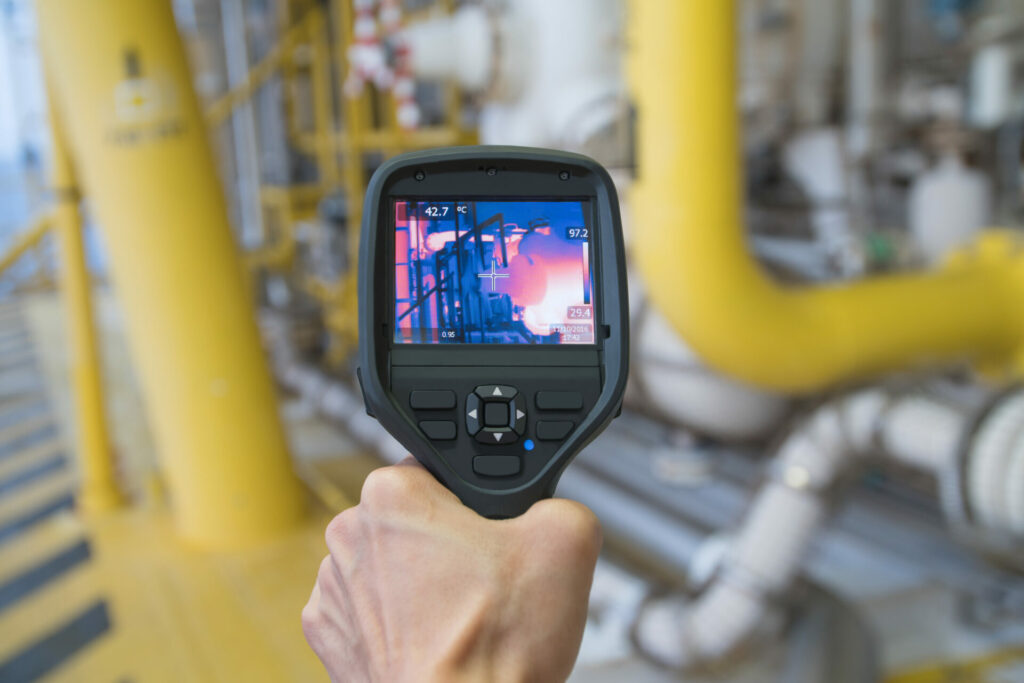Introduction
Remote inspections have been one of the most innovative technologies in the industry in recent years. With the rise of different real-time video trends and the ability to transmit high-speed data, a variety of digital technologies have been developed and have become vital tools for remote inspection across multiple industry sectors.
Remote assistance has various tangible benefits, having the opportunity to obtain diagnoses and prevent unexpected failures in areas of difficult access, makes every day more companies adopt this technological trend to improve their efficiency, productivity and be more secure.
What are remote inspections?
Remote inspections are a form of inspection that uses advanced technological tools that allow specialists to carry out inspections of industrial assets from a remote location without having to dismantle any machinery or reach a dangerous or difficult-to-access site. This is achieved using real-time data transmission technology, such as drones, cameras and sensors, which allows specialist technicians to know the condition of the elements without having direct contact with them.

These inspections have a wide variety of applications. The industry in general is one of the largest consumers of this service, it is also used to evaluate critical infrastructures, inspections of dangerous equipment, evaluation of damages after natural disasters and among other uses.
How do remote inspections work?
The operation varies depending on the technology used and the industry where it is applied. However, most of these inspections have similar processes:
- Identification of the equipment or system to be evaluated, and obtain its design and location characteristics.
- Remote monitoring in real time and data collection through remote access tools such as cameras, sensors or any other data capture technology.
- Transmission of data to an online platform or a data analysis tool.
- Data analysis, subject-matter experts examine the collected information and use data analysis tools to detect patterns, anomalies, and problems.
- Report and recommendations, after the remote inspection, a detailed report is provided on the conditions found and recommendations to be taken into account.
- Problem-solving and follow-up, activities are planned to address any recommendations issued in the report. In addition, a follow-up is carried out to guarantee that the actions carried out have been effective.
Benefits of remote inspections
Remote inspections offer a number of benefits that allow you to examine structures and components in inaccessible or confined areas.
- Eliminates geographical barriers, providing inspections regardless of the circumstances that exist in the work area and minimizes the need for inspectors to go to remote, difficult-to-access or dangerous sites.
- It saves resources, remote inspections are versatile, they are delivered directly in real time, therefore, waiting time is reduced, operating time is increased, and transportation costs are reduced.
- Reduces the carbon footprint, it is notable and significant when remote inspections are carried out how the environmental impact associated with the reduction in the use of transport, specialized machinery, stationery, tools and specialized equipment that consume more energy can be reduced.
- Improves safety, with these inspections the need to direct the operator to dangerous or high-risk sites is reduced, improving their safety and reducing the risk of injury. Security issues can also be detected before they become serious problems, allowing companies to take preventative action.
- Increased efficiency, grants the ability to perform multiple inspections in one day, increasing efficiency and reducing the time needed to complete inspections. In addition, the technologies used allow for a more detailed and accurate assessment of equipment and structures, which means that inspectors can spot problems that might otherwise go unnoticed.
- Improves predictive maintenance, helps identify patterns in the performance of equipment and systems, which can increase the effectiveness of predictive maintenance and prevent catastrophic failures.
Remote inspections are evolving the industry by allowing companies to perform inspections in more efficient and safer ways, improve the quality of remote work, reduce their costs and risk to workers.
Conclusion
Today, multiple companies have dedicated themselves to the development and implementation of these innovative technologies, such as the company Baker Hughes which is at the forefront of providing remote operations solutions, which include real-time monitoring and control systems, robots and drones for punctual inspection and maintenance, and collaboration and communication platforms for work teams located in different geographical areas.
Look for companies like Baker Hughes that provide reliable inspection services, state-of-the-art equipment, and involve high-level professionals.
References
Own source

